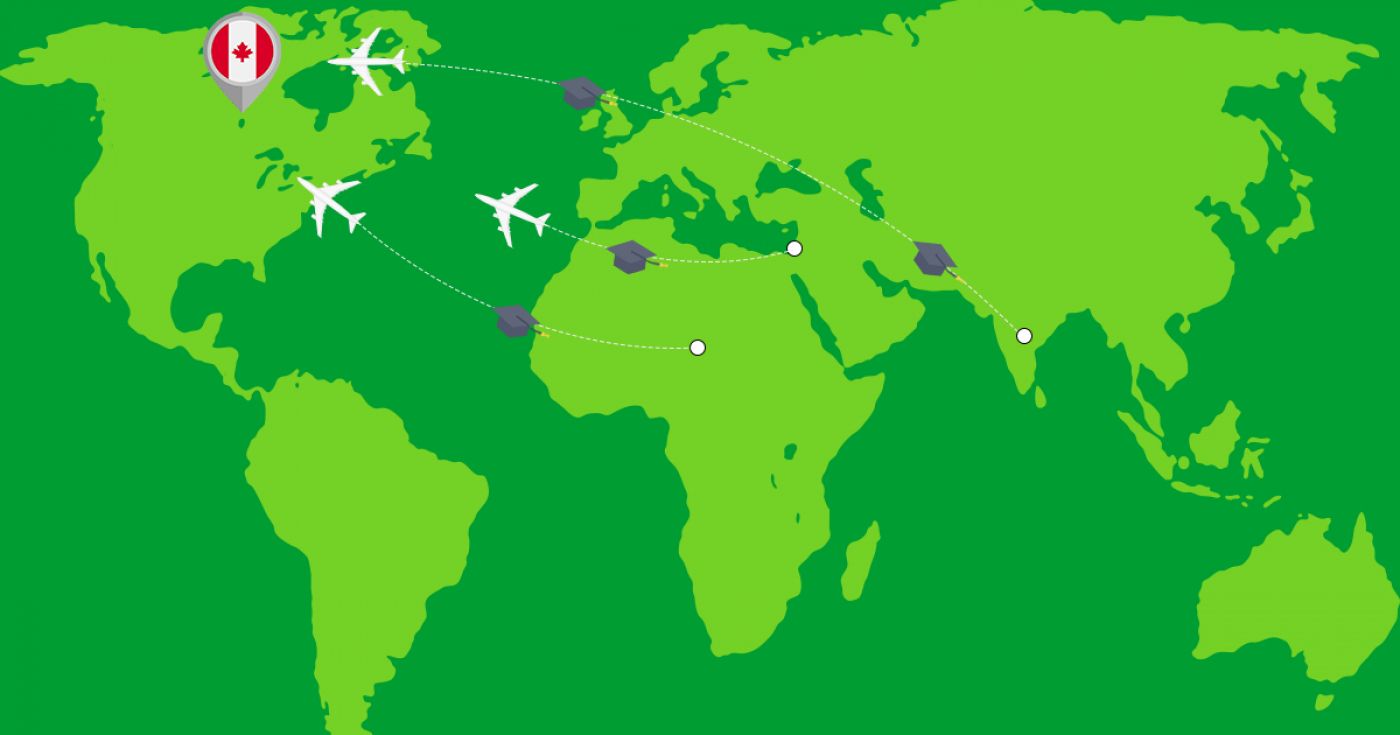Bachelor of Fine Arts, Major in Interior Design
at San Jose State University USA
Overview
The program draws from a wide range of university and Bay Area community resources to prepare students for entry-level interior design practice and positions them for future professional growth in the fields of interior design and architecture.
The curriculum involves both theoretical and practical study of interior architecture with emphasis on critical thinking, communication skills, design process, merging technologies, human factors, aesthetic sensibilities, laws, codes and regulations, and professional ethics. Students are held to the professional standards set forth by the Council for Interior Design Accreditation Board.
30
Application Processing Days
Under Graduate
Program Level
Fact & Figures
Full Time On Campus
Study Mode
48
Duration
San Jose State University
Location
Bachelor of Fine Arts, Major in Interior Design Assistant Fee
$19700
Tuition Fee
$0
Average Cost of Living
$70
Application Fee
Bachelor of Fine Arts, Major in Interior Design Admissions Requirements
- Minimum Level of Education Required: To be accepted into this program, applicants must have Grade 12 / High School Diploma.

Get superfast admissions at top Bachelor of Fine Arts, Major in Interior Design institutes in 2024
Benefits of choosing
➤Admission’s guaranteed at Top institutes across the world.
➤Enjoy exclusive application fee waiver’s with Edmissions.
➤Unlimited FREE Counselling sessions with Edmission’s
Experts
➤Get Tips from industry veterans to crack the IELTS exam in 1
week.
➤Assistance with scholarships, loans, forex, student accommodation and visa guidance.
Work Permit USA
Optional Practical Training or OPT is a period during which students, who have completed their degrees in the USA, are permitted to work for one year on a student visa by the United States Citizenship and Immigration Services (USCIS). OPT allows students to work for up to 3 years and develop real-world skills to survive in the competitive jobs market.
It is temporary employment for a period of 12-months that is directly related to the major area of study of an F-1 student. Eligible students have the option to apply for OPT employment authorization before completing their academic studies and/or after completing their academic studies.
A student can participate in three types of Optional Practical Training (OPT):
- Pre-Completion OPT: This is temporary employment provided to F-1 students before completion of their course of study.
- Post-Completion OPT: This is temporary employment available to F-1 students after completing their course of study.
- 24 Month STEM Extension: Students enrolled in STEM (Science, Technology, Engineering, and Mathematics) courses can a 24-month extension after their initial Post-Completion OPT authorization.
Detailed Program and Facts
30
Application Processing Days
Full Time On Campus
Program Intensity
Under Graduate
Program Level
48
Duration
Study Visa
Other Courses by San Jose State University,USA
Hospitality, Tourism, Wellness Leisure & Sports
Bachelor of Science, Major in Recreation with Concentration in Recreation Therapy
The B.S. Recreation Degree Program offers a specialized concentration in Recreation Therapy. This concentration prepares students to work as a Recreation Therapist in medical and non-medical settings. Graduates of the program are prepared to become nationally and state certified through the National Council for Therapeutic Recreation Certification (NCTRC) and the California Board of Recreation and Park Certification (CBRPC) exams. Recreation therapists provide treatment towards improved health of body, mind, and spirit in a variety of organizational settings including clinics, nonprofit and for-profit healthcare, nursing homes, pediatrics, forensics, and parks and recreation agencies. Recreation Therapy curriculum is comprised of 38 units of core classes, 13 units of recreation therapy classes and 13 units of courses in support of the major. The curriculum culminates in a semester-long internship (14 weeks) under the supervision of a faculty member and mentorship of a Recreation Therapist.
48 month
Duration
$ 19700
Tuition
Natural Sciences & Mathematics
Master of Science in Statistics
The Master of Science in Statistics prepares students to become practicing statisticians in business, government and industry fields. It features theoretical and applied coursework in statistics and advanced statistical techniques, and its skills-based coursework emphasizes writing and communication skills and provides students with practical project experience. The program was developed in concert with industry and is designed to dovetail into professional career opportunities.
Persons with bachelor’s degrees in engineering, the sciences, economics, business, the social sciences or other fields that use statistics are encouraged to apply. Those with bachelor’s degrees in mathematics or statistics are welcome to apply for the program in order to advance their technical and theoretical skills.
24 month
Duration
$ 15800
Tuition
Engineering & Technology
Master of Science in Materials Engineering
The MS Materials Engineering program provides advanced study of materials engineering topics with emphasis on both the fundamental and applied aspects. A multi-disciplinary approach to education is evident in the materials engineering program’s specialization areas of semiconductor processing, structural materials, and biomaterials. Elective courses are also available in science, business, and other engineering fields. This broad-based, multi-disciplinary education has proven to be an important factor for a student’s future success, either at leading Silicon Valley companies or in Ph.D. programs. Class schedules are designed for the convenience of employed engineers who wish to pursue graduate work on a part-time basis.
The faculty are actively involved in research in a number of areas including electronic and magnetic materials, semiconductor processing, MEMS, microelectronic packaging, polymers, composites, nanotechnology, and biomaterials. Research activity is sponsored by local industries as well as by government funding agencies.
The Materials Engineering program welcomes students with undergraduate degrees in a variety of other engineering and science disciplines.
24 month
Duration
$ 15800
Tuition
Arts & Humanities
Master of Public Administration
The mission of our MPA program is to educate and train individuals to become the leaders, managers and analysts in public and non-profit agencies that serve the Silicon Valley and its diverse population, using tools that enable them to recognize and value diversity, behave with high ethical standards, manage personnel resources fairly, recognize and manage risk, and manage programs and policies efficiently and cost-effectively. Upon completion of the degree students will employ critical thinking, ethical decision-making, and public service focus in the delivery of community services through the city, county, special district, state agency or non-profit agency.
24 month
Duration
$ 15800
Tuition
Engineering & Technology
Master of Science in Computer Engineering
The MS in Computer Engineering program provides students with an educational experience that combines electrical engineering and computer science with the best of academia, the high-tech industry, and the Silicon Valley. The high-tech industry increasingly requires engineers to be equipped with both hardware and software development knowledge and skills. The program provides in-class theory with hands-on hardware design and software development exercises to give students the skills necessary to create contemporary microelectronic products that are typically embedded computing systems containing both hardware and software. Graduates with an MS in Computer Engineering can expect to find significant opportunities in digital and computer hardware design and verification, system-level software development, and prototyping and testing as well as technical support and marketing.
- Founding member of the national Cybersecurity Research Center (TRUST) and of the NISA Center
- World finalist team in the Microsoft Embedded Systems Challenge
- Supported by Intel, Cadence, Xilinx, Cisco, Oracle, Sun, BEA, IBM, Microsoft, and more
Program Learning Outcomes
- Be able to demonstrate an understanding of advanced knowledge of the practice of computer engineering, from vision to analysis, design, validation, and deployment.
- Be able to tackle complex engineering problems and tasks using contemporary engineering principles, methodologies and tools.
- Be able to demonstrate leadership and the ability to participate in teamwork in an environment with different disciplines of engineering, science, and business.
- Be aware of ethical, economic, and environmental implications of their work, as appropriate.
- Be able to advance successfully in the engineering profession and sustain a process of life-long learning in engineering or other professional areas.
- Be able to communicate effectively in both oral and written forms.
24 month
Duration
$ 15800
Tuition
Business & Management
Bachelor of Arts, Major in Organizational Studies
The Organizational Studies major is an interdisciplinary major designed to help students develop skills for careers in a variety of organizations including small businesses, multinational corporations, non-profit organizations, and local, state, and national government agencies. Organizational Studies courses are designed to give students skills for real-world problem solving. Students have the opportunity to take courses across a wide range of social science disciplines including anthropology, communications studies, economics, political science, psychology, and sociology. Organizational studies is ideally suited for students who want careers in business, government, or the non-profit sector, where knowing how organizations work is a key to success.
48 month
Duration
$ 19700
Tuition
Social Sciences
Bachelor of Arts, Major in Psychology
The undergraduate degree, offered by the Department of Psychology, assures a broad coverage of the major areas of content and methods in psychology identified by the American Psychological Association as the backbone of a strong degree program. The goal of the breadth part of the degree requirements is to provide a strong background in general psychology. In addition, sufficient flexibility is offered through choices in fulfilling these requirements and through the electives so that students, in consultation with their advisors, can design a program of study which focuses on each student’s particular area of interest.
48 month
Duration
$ 19700
Tuition
Creative Arts & Design
Bachelor of Science, Major in Industrial Design
Established over thirty years ago, the main objective of the Industrial Design Program is twofold: first, for students to understand the evolving needs of humanity; and second, for students to address those needs by giving form to solutions. Graduates will emerge from the program prepared to design sustainable solutions to world problems. They will be trained in designing for and from all perspectives and to take into account the diversity of human existence. In our program, students will get to put their concepts into practice from the convenience of our Seid Lab, funded by an alumni and holding the most cutting edge fabrication equipment, available strictly to Industrial Design students.
Our distinguished faculty recognizes that, to become impactful industrial designers, students must have a firm comprehension of all things related to the human experience. As such, the program takes full advantage of the university setting by collaborating with SJSU’s Anthropology, Business, and Engineering programs. Additionally, because of our ideal location at the center of Silicon Valley, guest speakers from local tech companies and design studios are often invited to give talks, as well as critique student work.
Industrial design is not just the design of objects that facilitate everyday living; it’s also the design around experiences and services. With the world in constant flux, we aspire to equip future industrial designers with essential tools—a balance of theory, skill, and practice—necessary to become global citizens and effect change throughout the world.
48 month
Duration
$ 19700
Tuition
Arts & Humanities
Bachelor of Arts, Major in English with Concentration in Professional and Technical Writing
The Bay Area needs well-trained technical writers and editors. The high-tech companies of Silicon Valley require people who are able to write quality manuals, reports, and web updates; write clear business reports and promotional materials; communicate effectively both with consumers and within the company; and understand each step of the publication process.
The U.S. Bureau of Labor Statistics reports that demand for technical writers will continue to increase for the foreseeable future, especially in regions of the country like ours. Download more information about the demand for technical writers. [pdf]
So what is Professional and Technical Writing (PTW)? Simply put, PTW is writing done in a workplace environment designed to persuade, inform, or instruct. While “professional” generally applies to business writing and “technical” generally applies to writing about technical topics, most professional writers would find the distinction superficial because they are frequently required to do both.
48 month
Duration
$ 19700
Tuition
Natural Sciences & Mathematics
Master of Science, Major in Biological Sciences with Concentration in Physiology
The master’s program in Biological Sciences with a concentration in Physiology, offered by the Department of Biological Sciences, offers students training in the pursuit of rigorous scientific investigation with an emphasis on the integrative nature of physiology across levels of organization from molecule to organism. During their research experience, students acquire the skills necessary to successfully address a variety of research questions under the guidance of faculty.
In addition, students with our degree will have gained experience in critical thinking, problem-solving, research methodology (e.g., experimental design, sampling techniques, and analysis), and both written and oral communication. Our alumni are successful applicants for doctoral degree programs and generally attain high level academic and non-academic positions in both the private and public sectors.
24 month
Duration
$ 15800
Tuition
View All Courses by San Jose State University, USA
Top Study Abroad Exams
Popular Universities to Study Abroad
- University of Waterloo
Waterloo
- University Canada West
Vancouver
- University of Windsor
Windsor
- Cape Breton University
Sydney
- Dalhusie University
Halifax
- Carleton University
Ottawa
- University of Ottawa
Ottawa
- University of Guelph
Guelph
- Explore more colleges in Canada
- University of New Haven
West Haven
- Kent State University
Kent
- Wright State University
Dayon
- San Jose State University
West Haven
- Clark University
Worcester
- Rowan University
Glassboro
- Golden Gate University
San Francisco
- Arkansas
San Francisco
- Explore more colleges in USA
- Coventry University
Coventry
- University of Birminghame
Birminghame
- De Montfort University
Leicester
- Cardiff University
Cardiff
- BPP University
London
- University of West London
London
- University of Nottingham
Nottingham
- University of Warwick
Coventry
- Explore more colleges in UK
- Auckland Institute Of Studies
Auckland
- Massey University - Auckland Campus
Albany
- Eastern Institute of Technology - Auckland Campus
Auckland
- NorthTec - Auckland Campus
Auckland
- Massey University - Manawatu Campus
Palmerston North
- University of West London
London
- Wellington Institute of Technology (WelTec) - Petone Campus
Lower Hutt
- Otago Polytechnic - Dunedin Campus
Dunedin
- Explore more colleges in New Zealand
- Chandigarh University
Mohali
- Parul University
Vadodara
- Sharda University
Greater Noida
- Jain University
Bangalore
- Bennett University
Greater Noida
- Lovely Professional University
Phagwara
- Chitkara University
Rajpura
- Brainware University
Kolkata
- Explore more colleges in India
- Abu Dhabi University
Abu Dhabi
- Gulf Medical University
Ajman
- New York University
Abu Dhabi
- Emirates Aviation University
Dubai
- Higher Colleges of Technology
Dubai
- British University in Dubai
Dubai
- Al Ghurair University
Dubai
- American University in the Emirates
Dubai
- Rochester Institute Of Technology Dubai
Dubai
- Emirates Academy of Hospitality Management
Dubai
- American University of Ras Al Khaimah
Ras Al Khaimah
- Explore more colleges in UAE
- Ras Al Khaimah Medical and Health Sciences University
Ras Al Khaimah
Explore Colleges and Courses in USA
- Arts & Humanities in usa
- Business & Management in usa
- Natural Sciences & Mathematics in usa
- Engineering & Technology in usa
- Computer Science & IT in usa
- Health Sciences, Nursing and Emergency Services in usa
- Social Sciences in usa
- Creative Arts & Design in usa
- Hospitality, Tourism, Wellness Leisure & Sports in usa
- Environmental Studies & Earth Sciences in usa
Latest Blog Posts
Trending Blog Posts
Search, Shortlist, Apply and get accepted! It’s that Simple to pursue your dream to Study abroad with Edmissions. Our team of experts provide you the right guidance that helps you to take admission in your dream college in countries like Canada, the USA, the UK
© 2021-2024 Edmissions - All rights reserved.
TALK TO OUR EXPERTS











